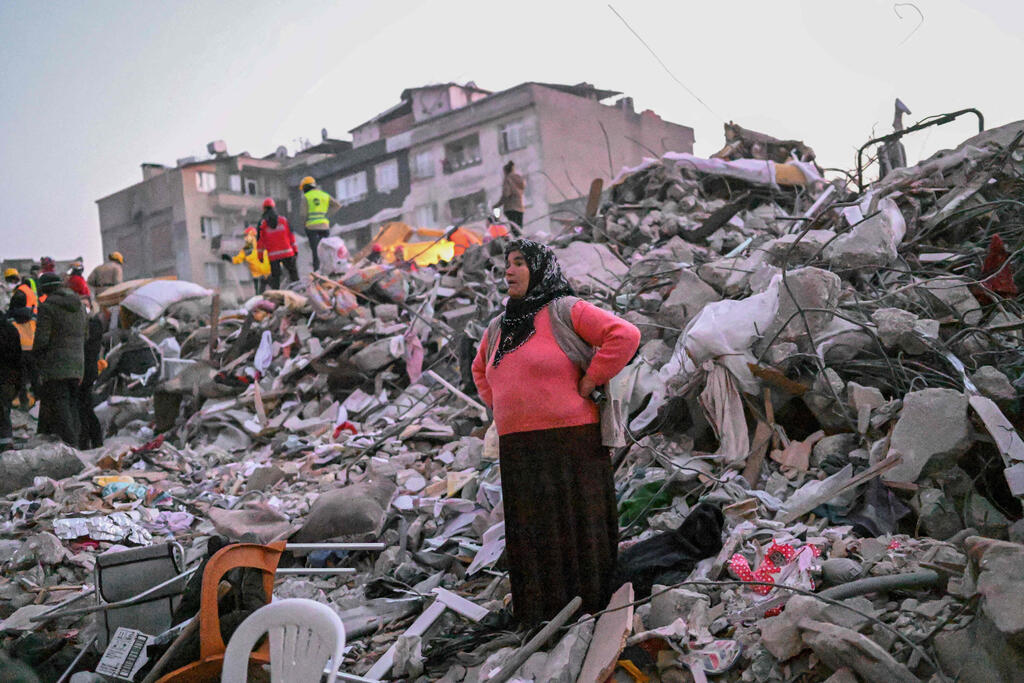Getting your Trinity Audio player ready...
A recently-conducted research challenges the prevailing assumption that the Dead Sea Fault, part of the extensive Syrian-African Rift system, forms a continuous structural link with the East Anatolian Fault in southern Turkey. This study, conducted by the University of Haifa's School of Environmental Sciences and the Geological Survey of Israel, reveals a crucial tectonic disconnection.
Destruction in Turkey after major earthquake
(Video: Reuters)
In an enlightening disclosure by Professor Uri Schattner, an associate Professor from the Faculty of Social Sciences and Department of Geography and Environmental Studies at the University of Haifa, he writes: "Following the significant seismic events in Turkey in February 2023, there was an expectation of consequential aftershocks along Israel's Dead Sea Fault. However, such activity did not materialize. Our research clarifies this by showing that, contrary to previous scientific consensus, the Dead Sea Fault is not tectonically continuous with the East Anatolian Fault. Instead, seismic energy disperses through smaller tremors across intervening regions such as Syria and Lebanon."
Nearly two years prior, southeastern Turkey experienced some of the strongest earthquakes recorded in Middle Eastern history, resulting in tens of thousands of casualties. The current study, published in the journal Tectonophysics, involved seismic analyses by Professor Schattner, Dr. Amit Segev, and Dr. Nadav Wetzler. They sought to understand why Turkey's major quakes did not significantly impact the Dead Sea Fault.
Researchers conducted a thorough seismological analysis of earthquake data from Israeli and Turkish databases, spanning from Eilat to Turkey and neighboring regions. This was complemented by a comprehensive review of geological studies on seismic activity, tectonics, and volcanism throughout the Dead Sea Fault's evolution over millions of years.
Findings from the study highlight a non-uniform movement along the Dead Sea Fault, which extends from the Red Sea in the south to northern Turkey, without forming a seamless connection with Turkey's fault system in its northern segment. The southern portion (from Eilat to the Sea of Galilee) concentrates seismic activity near the fault, with a cumulative offset of approximately 65 miles between eastern and western structures (the east moving north relative to the west).
In contrast, the fault displacement diminishes in Lebanon and Syria to just a few miles, and it is absent at Turkey's periphery. Here, seismic events are dispersed across broader areas rather than confined to the fault line, reflecting concentrated movement in the south versus its dispersion in the north.
"This insight refines our understanding of seismic energy release in quake-prone regions and can enhance our seismic preparedness strategies. Our findings indicate that the Dead Sea Fault lacks a continuous structural connection with the East Anatolian Fault. This is pivotal for regional seismic risk management and raises new questions about potential earthquake dynamics in northern Israel," stated Dr. Wetzler from the Geological Survey's Seismology Division.
Get the Ynetnews app on your smartphone: Google Play: https://bit.ly/4eJ37pE | Apple App Store: https://bit.ly/3ZL7iNv
The research posits that the interface between the Dead Sea Fault and the East Anatolian Fault serves as a natural laboratory for studying the processes accompanying tectonic plate boundary formation, underscoring its international significance. "Plate boundaries like the Dead Sea Fault exist in many other locations, such as California's San Andreas Fault, forming part of a network of interconnected plate boundaries. Our study illuminates how such junctions between plate boundaries develop," explained Dr. Segev.
Researchers concluded: "Our findings fundamentally alter the perception of Earth's crustal structure in our region, thus redefining the framework for understanding earthquake distribution. A deeper comprehension of the Dead Sea Fault's geological structure and its link to neighboring countries can improve emergency preparedness plans. The area's uniqueness can assist authorities in better managing seismic risk."






